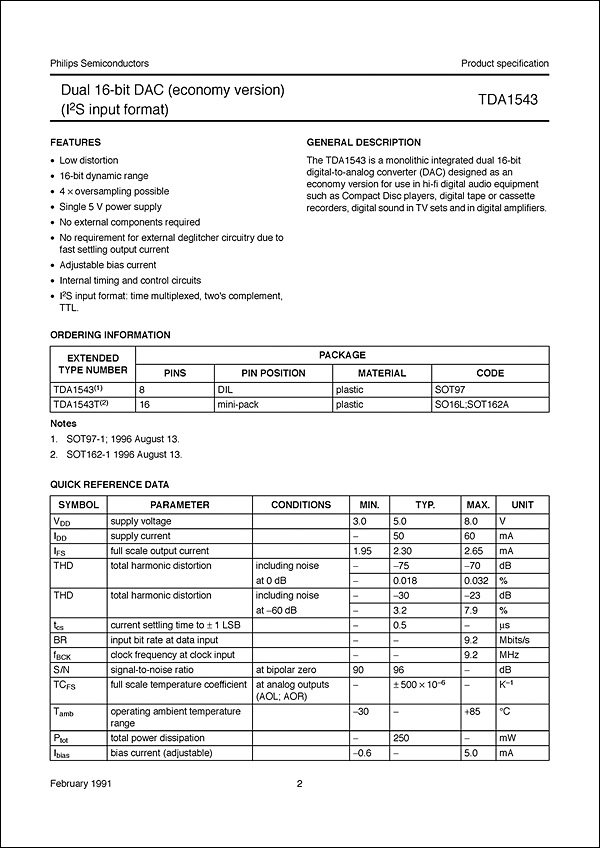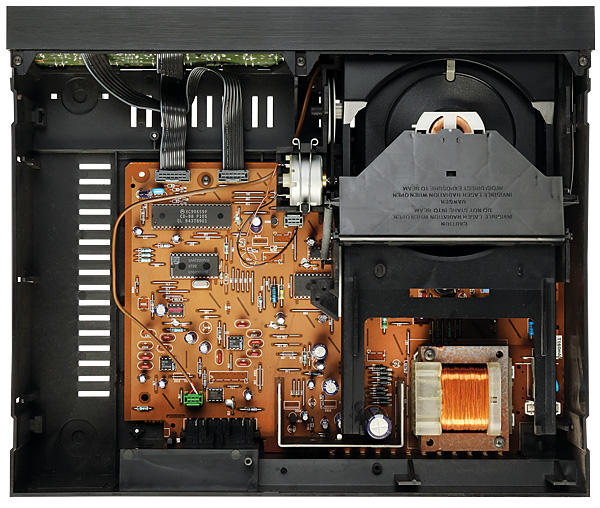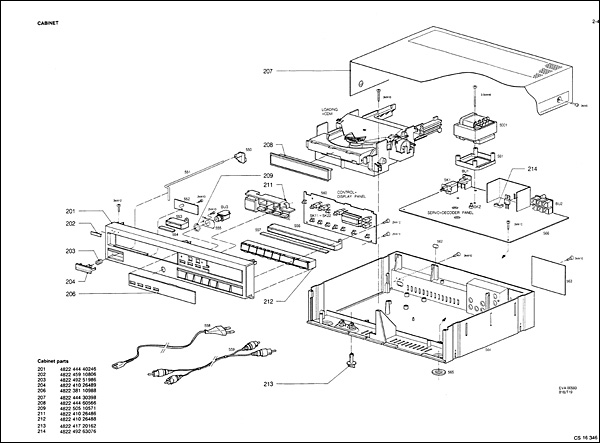Philips CD380 CD player Page 2
Key Issues
Something I also appreciated was the use of separate track skip and search keys. This area had been an ergonomic muddle for Philips in the past, the skip forward function being tied to the play key and there being no facility to jump backwards. All these quirks had now been ironed out. The 'shuffle' key gets its own indicator and is given far more prominence than this essentially little-used facility really deserves.

Of more interest is the 'auto play' feature, where the machine spins up and plays a pre-loaded CD the moment power is turned on – why don't all CD players do that? The headphone socket is also potentially useful, subject to one being able to find a pair of headphones where the fixed level offered by the player is neither frustratingly quiet nor far too loud. As for the RCA audio output connections, these are standard types set to the default 2V level, so there should be no problems connecting this vintage CD player to any modern integrated or preamplifier.
![]() Tim Listens
Tim Listens
The sound of the Philips CD380 will be reassuringly familiar if you are used to any of the company's other 4x oversampling 16-bit players, for example the CD450 [HFN Aug '14]. It is plump and full bodied, with a broad and continuous soundstage. As ever, it sounds ever so slightly dry compared to a 14-bit player such as the CD104 [HFN Apr '14], but this should not necessarily be taken as a criticism. The presentation is natural and sounds believably like real music, but the focus isn't as sharp as can be achieved by the best Japanese players of the era, like the Technics SL-P1200 [HFN Aug '13]. So far so predictable, but the real question is what is lost by the change to the simpler DAC.

I put my personal CD960 [HFN Jul '20] to one side when making the comparison and instead used a borrowed CD473, fitted with the 'A' version of the TDA1541 DAC. The difference is easy enough to hear but more difficult to tie down and describe. After swapping backwards and forwards between the two I decided that the CD380's sound is ever so slightly diffuse when compared to that of a TDA1541-equipped player. It's like looking at a view through a slightly dirty window as compared to standing on the other side of the glass and seeing it directly.
The effect was noticeable mostly at the edges of individual notes, which seemed to be less well placed. Also, heavy bass tones sometimes seemed to run away a little, as if there was never quite enough information available to describe them perfectly.
Full Disclosure
Listening to clean, simply orchestrated music made the CD380 easier to analyse. Mozart's Horn Concerto in E Flat [K 495, Philips 0 179 932] sounded rich and full, but the texture of the strings was not as well lit or precisely rendered as I am used to hearing. It was almost as if the whole section had been moved back in the concert hall, so that they could no longer be heard as vividly. The brass, on the other hand, still sounded magnificent and was well placed within the space given to the orchestra – a fine result from what is unashamedly a non-specialist product. The key, I think, is the retained ability to preserve the fluid nature of well recorded music; many budget players fail in this area by sounding synthetic and mechanical.

Changing musical styles to New Order's 'Blue Monday' [Substance 1987; London Records 520008-2] gave similar results, the heavy bassline retaining its weight and warmth but the electronic percussion sounding just a little vague. A bit more bite would not have gone amiss, a shortcoming with many of the early Philips players but more of an acute issue here. In a system that is naturally bright sounding this may even turn out to be a desirable compromise.
This is an easygoing player, not an analytical one, and I still think it would have been well above the standards of its market sector at the time. It is considerably better in most of the key areas than many of the single-DAC models from Japan, which would have been its rivals when new. That being said, the likes of Sony and Technics did a better job of disguising the lowly rank of their entry-level models when it came to materials and finish. The TDA1543 DAC is a remarkable feat of rationalisation, but can't quite match its famous, costlier predecessor for sheer sound. Still, not a bad player though.
Buying Secondhand
The same precautions apply to buying a CD380 as do to any Philips player of this era. The most common problems are poor soldering and a failure of the CDM laser unit, although the latter is less common now as the weaker examples have now been weeded out.

Quick Inspection
As ever, it pays to ensure that the components in the circuit that control the power supply to the laser are in good order before condemning the laser itself. Failed and cracked solder joints can occur anywhere, but these are most usually found around the voltage regulators and the output sockets at the back. The symptoms of the latter are normally obvious, but the former can be baffling, depending on exactly where the failure has occurred. A quick inspection before diving into a long-winded diagnostic process can therefore pay dividends.
The durability of the cabinet finish of this budget model is not quite up to the standards of the more expensive Philips machines, so the greatest challenge may be finding an example which still looks reasonably presentable.
Hi-Fi News Verdict
The Philips CD380 may be an obscure model compared to some of the more popular alternatives but it is an intriguing player nevertheless. Many of the traditional Philips virtues are present and correct, though it's difficult to avoid the impression that the 'economy' TDA1543 DAC is second best. The machine is certainly well worth a try in a bright-sounding system though, if you can find a tidy one...


















































